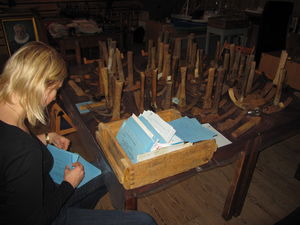Collections and Preservation
The Herring Era Museum has permanent displays in five buildings, totaling 2,500 square meters – making it one of the largest collections in the country.
From the early stages of the Museum's development (around 1990), our focus was on specific aspects of the history of the herring industry, represented through several buildings. The Museum has won multiple awards for it's approach.
Another feature of the Museum and its exhibitions is the great number of artifacts, both large and small, that were used in the fishing and processing of herring. These include enormous and heavy machinery, boats, motors, anchors as well as smaller hand tools.
There are a great variety of artifacts on display - perhaps 50 - 70% of our total collections - while an equal number of objects are preserved in storage areas. These range from paper records (such as photographs and documents) to old barrels and boats that are stored in seven locations, in six houses. It should be noted that a number of these items are unregistered and a determination of the value of preserving them needs to be made.
In 2014 we will begin building the future storage house of the Museum – The Salt House, which dates from the late 19th century. The main purpose of this new building is to serve as storage, along with housing registration and preservation facilities. In 2011, the Herring Era Museum began registration of its objects and artifacts in Sarpur, the cultural database for Icelandic museum collections.

